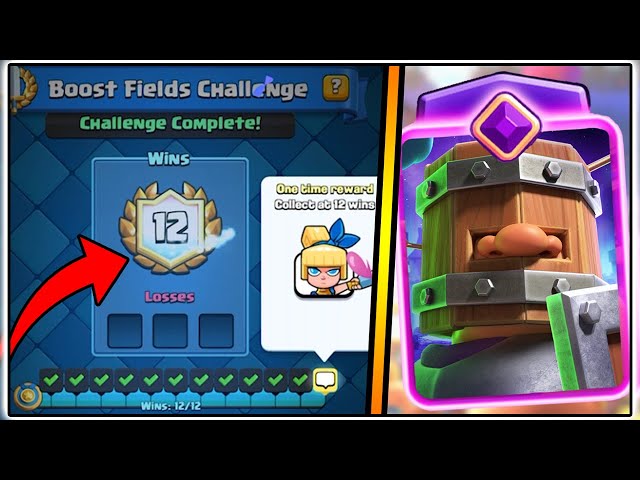Foundational Principles for Boost Field Challenges
Success in Boost Fields challenges fundamentally relies on a deck's ability to seize, hold, and exploit areas offering statistical or tactical advantages. Your card choices and strategic approach must center on this dynamic, focusing on units and spells that allow you to dictate control over these pivotal zones.
Key Card Archetypes for Dominance
To construct an effective deck for Boost Fields, prioritize cards that fulfill these strategic roles:

- Field Controllers: These are units designed to capture and maintain presence on boost fields. Look for cards with high health, defensive abilities, area denial (like persistent damage or slowing effects), or the ability to spawn multiple bodies to occupy space.
- Boost Exploiters: Select units that gain disproportionate value when their stats or abilities are enhanced by a boost field. This includes high-damage single-target attackers, units with powerful splash damage, or those whose abilities scale exceptionally well with increased attack, speed, or other specific buffs.
- Disruption & Removal Tools: Essential for clearing enemy units from boost fields or neutralizing threats that have already been augmented. Include direct damage spells, units with push/pull mechanics, hard removal abilities, or crowd control effects.
- Mobility & Tempo Enablers: Cards that allow for rapid deployment to, or repositioning onto, contested or newly available boost fields. Low-cost cycle cards or units with charge/dash abilities can provide crucial tempo swings.
- Protective Measures: Consider including ways to protect your key units once they are established on valuable boost fields. This could involve healing spells, shields, or counter-spell mechanics.
Conceptual Deck Composition
A balanced and potent deck for Boost Fields might be structured around these core components, with card counts being approximate and adaptable:
- Field Anchors (2-3 cards): Durable units specifically chosen to occupy and survive on boost fields, acting as the frontline for your strategy.
- Primary Boost Payoffs (2-3 cards): High-impact units that become your win conditions when enhanced by boost fields. Their selection should align with the most common or powerful boosts available.
- Targeted Removal/Control (2-3 cards): A mix of spells and/or units focused on efficiently removing enemy threats from boost fields or negating their advantages.
- Versatile Support/Cycle (1-2 cards): Flexible, often lower-cost cards that can adapt to various situations, help you cycle to your key components, or provide tactical advantages like vision or minor disruption.
Core Strategic Pillars
Executing your strategy effectively in a Boost Fields challenge involves adhering to several key operational principles:
- Prioritize High-Value Fields: Not all boost fields are created equal. Identify and aggressively contest the most impactful fields – those that offer the best synergy with your deck or pose the greatest threat if controlled by your opponent.
- Maximize Boost Synergy: Deploy units onto fields where the specific boost directly enhances their primary strengths. A unit that scales with attack speed benefits most from a speed boost, while a glass cannon attacker thrives on an attack power field. Avoid suboptimal placements.
- Proactive Denial: Actively use your disruption and removal tools to prevent your opponent from establishing and benefiting from boost fields. Neutralizing a unit before it gets boosted is often more efficient than dealing with it afterwards.
- Maintain Tempo and Adaptability: The flow of control around boost fields can change rapidly. Strive to maintain initiative and board presence. Be prepared to adapt your unit deployment and resource allocation based on the current field layout, active boosts, and your opponent’s strategy.










